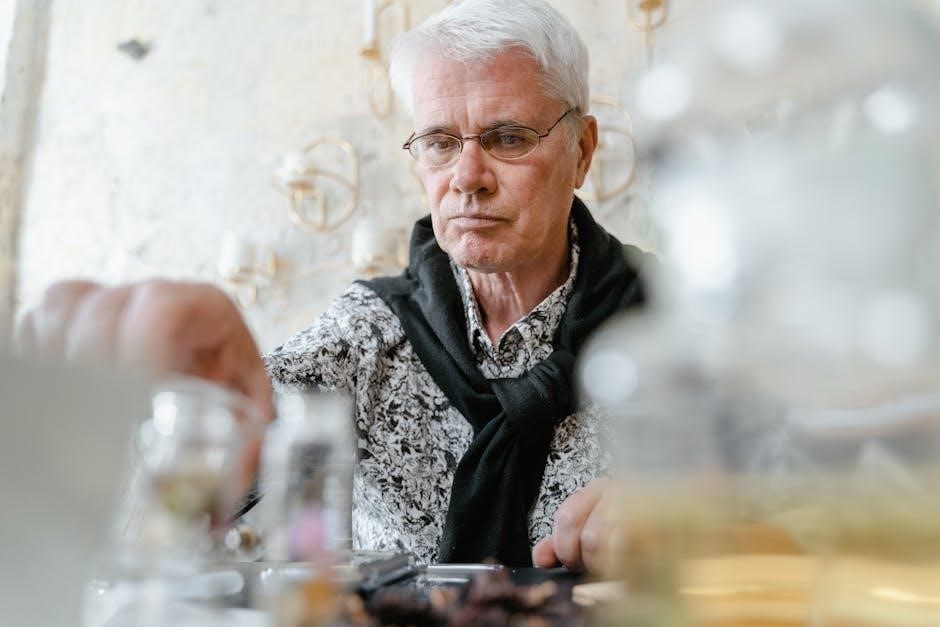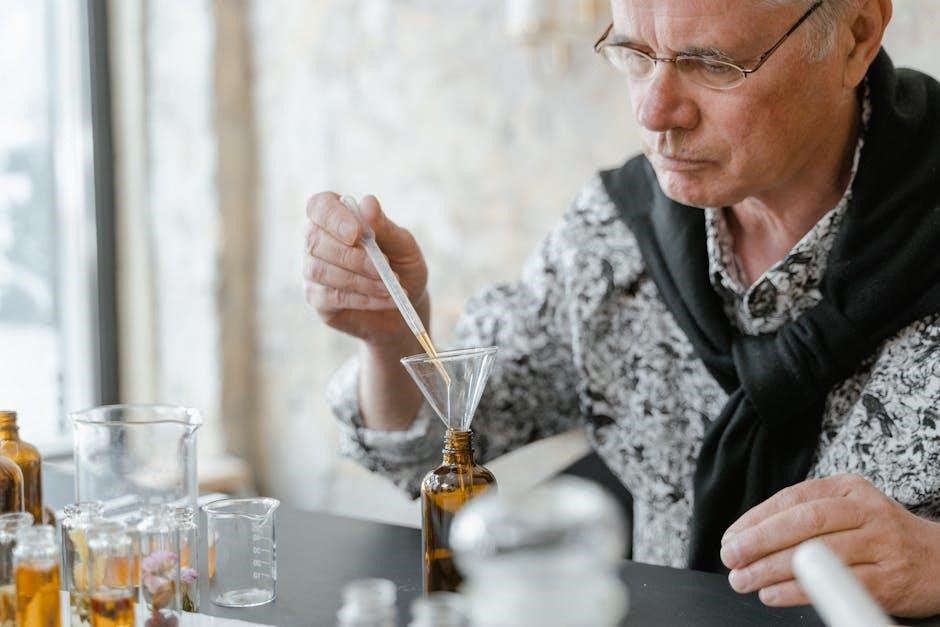The humidifier bottle is used with oxygen concentrators to add moisture to the air, helping to alleviate dryness and discomfort, and is typically filled with distilled water to ensure proper function and safety always matters.
Understanding the Importance of Humidification
Humidification is a crucial aspect of oxygen therapy, as it helps to prevent dryness and discomfort in the nasal passages and throat. When oxygen is delivered directly to the lungs, it can be very dry, leading to irritation and discomfort. By adding moisture to the air, humidification helps to alleviate these issues, making oxygen therapy more comfortable and effective. The use of a humidifier bottle with an oxygen concentrator is an effective way to add moisture to the air, and is often recommended by healthcare professionals. Proper humidification can help to reduce the risk of nosebleeds, sore throats, and other respiratory problems associated with oxygen therapy. Additionally, humidification can help to improve the overall quality of life for individuals using oxygen therapy, by reducing discomfort and improving breathing. By understanding the importance of humidification, individuals can take steps to ensure they are using their oxygen concentrator and humidifier bottle effectively, and getting the most out of their oxygen therapy. This can include filling the humidifier bottle with distilled water, and cleaning and maintaining the equipment regularly. Overall, humidification is a critical component of oxygen therapy, and is essential for comfortable and effective treatment.

Preparing the Humidifier Bottle
Preparing the humidifier bottle involves cleaning and inspecting the equipment to ensure proper function and safety always matters with oxygen concentrators using distilled water.
Filling the Humidifier Bottle with Distilled Water
Filling the humidifier bottle with distilled water is a crucial step in the process of using an oxygen concentrator with a humidifier bottle. The distilled water is used to add moisture to the oxygen being delivered to the patient, which can help to alleviate dryness and discomfort in the nose and throat. It is essential to use distilled water in the humidifier bottle, as tap water can contain minerals and other impurities that can cause problems with the oxygen concentrator. The humidifier bottle should be filled with distilled water to the recommended level, which is usually indicated by a line or mark on the bottle. Overfilling the bottle can cause the oxygen concentrator to malfunction, while underfilling it can reduce its effectiveness. By filling the humidifier bottle with distilled water, patients can help to ensure that they receive the most benefit from their oxygen therapy. Proper filling of the humidifier bottle is essential for safe and effective use of the oxygen concentrator. The bottle should be handled carefully to avoid spills and contamination.

Attaching the Humidifier Bottle to the Oxygen Concentrator
Attach the humidifier bottle to the oxygen concentrator outlet port, ensuring a secure connection for proper function and safe use always with oxygen therapy equipment and following manufacturer instructions carefully.
Locating the Oxygen Outlet Port
To locate the oxygen outlet port, first, refer to the user manual or manufacturer’s instructions for specific guidance on your oxygen concentrator model. Typically, the oxygen outlet port is located on the back or side of the concentrator. It is usually marked with a label or icon indicating its purpose. The port may be covered with a cap or plug to prevent dust and debris from entering when not in use. Gently remove the cap or plug to access the port. Be sure to handle the port and surrounding area with care to avoid damage or contamination. If you are unsure about the location of the oxygen outlet port, consult with a healthcare professional or contact the manufacturer’s customer support for assistance. Proper identification of the oxygen outlet port is crucial for safe and effective use of the humidifier bottle with your oxygen concentrator. Always follow the recommended procedures for attaching and using the humidifier bottle to ensure optimal performance and minimize potential risks. By taking the time to correctly locate the oxygen outlet port, you can help ensure a secure and proper connection for your humidifier bottle. This step is essential for maintaining the overall safety and efficacy of your oxygen therapy equipment.
Connecting the Humidifier Bottle to the Oxygen Concentrator
To connect the humidifier bottle to the oxygen concentrator, start by ensuring the humidifier bottle is filled with the recommended amount of distilled water. Next, locate the oxygen outlet port on the concentrator, as previously identified. Take the humidifier bottle and gently screw it onto the oxygen outlet port, making sure it is securely attached. The connection should be snug but not overly tight, as this could damage the port or the humidifier bottle. It is essential to handle the humidifier bottle and oxygen concentrator with care to avoid any damage or contamination. Once the humidifier bottle is connected, turn on the oxygen concentrator and check for any leaks or unusual sounds. If you notice any issues, turn off the concentrator and inspect the connection. Proper connection of the humidifier bottle to the oxygen concentrator is crucial for effective and safe oxygen therapy. Always follow the manufacturer’s instructions and guidelines for connecting and using the humidifier bottle with your oxygen concentrator. By doing so, you can help ensure optimal performance and minimize potential risks associated with oxygen therapy. Regularly inspect the connection to ensure it remains secure.
Troubleshooting Common Issues
Identify and resolve issues with the oxygen concentrator and humidifier bottle, such as leaks or reduced output, by following manufacturer guidelines and troubleshooting steps to ensure safe and effective operation always matters online.
Reduced Oxygen Output
To troubleshoot reduced oxygen output, first check the humidifier bottle for proper installation and ensure it is not overfilled, as this can restrict airflow and decrease oxygen output. Next, inspect the oxygen concentrator and humidifier bottle for any signs of blockage or kinking in the tubing, which can also reduce oxygen flow. Additionally, verify that the oxygen concentrator is set to the correct flow rate and that the humidifier bottle is properly connected to the oxygen outlet port. If issues persist, consult the user manual or contact a healthcare professional for further assistance. It is essential to follow proper troubleshooting steps to resolve reduced oxygen output and ensure safe and effective operation of the oxygen concentrator and humidifier bottle. By taking these steps, users can help prevent reduced oxygen output and maintain optimal oxygen therapy. Regular maintenance and inspection of the equipment can also help prevent issues and ensure continuous effective operation. Proper use and maintenance are crucial for safe and effective oxygen therapy.
Importance of Proper Training and Education
Proper training and education are crucial for safe and effective use of oxygen concentrators and humidifier bottles. A comprehensive training session should be provided to users, covering topics such as equipment operation, maintenance, and troubleshooting. This education helps users understand the importance of proper humidifier bottle installation, filling, and maintenance to prevent issues such as reduced oxygen output. Healthcare professionals should provide personalized guidance and support to ensure users are comfortable and confident in operating the equipment. Furthermore, ongoing education and training can help users stay up-to-date on best practices and new technologies, ensuring they receive optimal benefits from their oxygen therapy. By prioritizing proper training and education, users can minimize risks and maximize the effectiveness of their oxygen concentrator and humidifier bottle. Regular follow-up sessions and access to educational resources can also help users address any questions or concerns they may have, promoting safe and effective use of the equipment. Proper training and education are essential for optimal oxygen therapy outcomes.